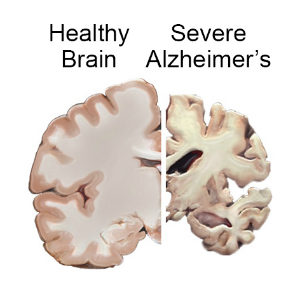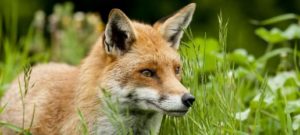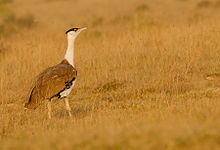Prelim Snippets 15-07-2019
SRMSAT-1

- Context: The Nano-Satellite SRMSAT-1, built by the students of SRM Institute of Science and Technology, in collaboration with the ISRO, has completed 40,000 orbits since its launch on October 12, 2011 from Sriharikota.
About SRMSAT-1:
- It is a Nanosatellite built by students at SRM Institute of Science and Technology, Chennai.
- The satellite is an Indian Technology demonstration and Earth observation satellite which is operated by the SRM Institute of Science and Technology.
- This nanosatellite was used to monitor greenhouse gases in atmosphere.
- Mission: SRMSAT’s primary mission was the development of a Nanosatellite platform for future missions.
- Its secondary mission was monitoring of greenhouse gases using an Argus Spectrometer.
- Specifications: It is a 10.4-kilogram spacecraft, which measures 28 cm in length by 28 cm in height and width.
- It had a design life of one year, but is still working as of October 2017 and can be tracked easily on n2yo.com.
- Launch: It was launched from the ISRO’s Satish Dhawan Space Centre at Sriharikota in October 2011 atop a Polar Satellite Launch Vehicle (PSLV) C18 rocket.
KRISHI VIGYAN KENDRA
- It is an agricultural extension center in India, the name means “farm science center”.
- It is the ultimate link between the Indian Council of Agricultural Research and farmers.
- It aims to apply agricultural research in a practical and localized setting.
Responsibilities:
- On-farm testing to assess the location specificity of agricultural technologies under various farming systems.
- Frontline demonstrations to establish production potential of technologies on the farmers’ fields
- Capacity development of farmers and extension personnel to update their knowledge and skills on modern agricultural technologies
- Multi Sector Support: To work as Knowledge and Resource Centre of agricultural technologies for supporting initiatives of public, private and voluntary sectors in improving the agricultural economy of the district.
- Provide farm advisories using ICT and other media means on varied subjects of interest to farmers.
ALZHEIMER’S DISEASE

- Context: Healthy lifestyle may offset genetic risk for Alzheimer’s, Good diet and adequate exercise could make a big difference- says study.
About Alzheimer’s disease:
- It is a Chronic Neurodegenerative Disease that usually starts slowly and gradually worsens over time and is the cause of 60–70% of cases of dementia.
- The most common early symptom is difficulty in remembering recent events.
- As the disease advances, symptoms can include problems with language, disorientation (including easily getting lost), mood swings, loss of motivation, not managing self-care, and behavioural issues.
- As a person’s condition declines, they often withdraw from family and society and gradually, bodily functions are lost, ultimately leading to death.
- Although the speed of progression can vary, the typical life expectancy following diagnosis is three to nine years.
- Causes: About 70% of the risk is believed to be inherited from a person’s parents with many genes usually involved.
- Other risk factors include a history of head injuries, depression, and hypertension
- Treatment: No treatments stop or reverse its progression, though some may temporarily improve symptoms.
CYBER ATTACKS
Malware
- Short for malicious software refers to any kind of software that is designed to cause damage to a single computer, server, or computer network.
- Ransomware, Spy ware, Worms, viruses, and Trojans are all varieties of malware.
Phishing:
- It is the method of trying to gather personal information using deceptive e-mails and websites.
Denial of Service attacks:
- It is an attack meant to shut down a machine or network, making it inaccessible to its intended users.
- DoS attacks accomplish this by flooding the target with traffic, or sending it information that triggers a crash.
Man-in-the-middle:
- It is also known as eavesdropping attacks, occur when attackers insert themselves into a two-party transaction.
- Once the Attackers interrupt the traffic, they can filter and steal data.
SQL Injection:
- It attacks specifically targets such kind of servers, using malicious code to get the server to divulge information it normally wouldn’t.
Cross-Site Scripting (XSS):
- Similar to an SQL injection attack, this attack also involves injecting malicious code into a website, but in this case the website itself is not being attacked.
- Instead the malicious code the attacker has injected, only runs in the user’s browser when they visit the attacked website, and it goes after the visitor directly, not the website.
Social engineering
- It is an attack that relies on human interaction to trick users into breaking security procedures in order to gain sensitive information that is typically protected.
RED FOX

- Context: Researchers have found that substances used in rat poison in half of the red foxes they studied, according to the scientists at the Norwegian University of Life Sciences
About Red Fox:
- It is the largest of the True Foxes and one of the most widely distributed members of the order Carnivora
- It is present across the entire Northern Hemisphere from the Arctic Circle to North Africa, North America and Eurasia.
- It is listed as least Concern by the IUCN
- Its range has increased alongside human expansion, having been introduced to Australia, where it is considered harmful to native mammals and bird populations.
- Due to its presence in Australia, it is included on the list of the “world’s 100 Worst Invasive Species”.
GREAT INDIAN BUSTARD

- Context: The Union Ministry of Environment, Forests and Climate Change on July 12 told the Lok Sabha that it had initiated a Rs 33.85 crore project to conserve and protect the 130 Great Indian Bustards left in India
About Great Indian Bustard:
- It is a bustard found on the Indian subcontinent.
- Specifications: A large bird with a horizontal body and long bare legs, giving it an ostrich like appearance, this bird is among the heaviest of the flying birds.
- Once common on the dry plains of the Indian subcontinent, as few as 150 individuals were estimated to survive in 2018 (reduced from an estimated 250 individuals in 2011
- The species is critically endangered by hunting and loss of its habitat, which consists of large expanses of dry grassland and scrub.
- These birds are often found associated in the same habitat as Blackbuck.
It is protected under Wildlife Protection Act 1972 of India.
US SCIENTISTS DISCOVER GENE TO OPTIMISE PLANTS’ ABILITY TO STORE CARBON
- Context: A new study done by American scientists in California has discovered a gene that determines how deep a plant’s roots go and thus store carbon in a more stable manner.
- Plants capture carbon from the atmosphere and store it below the ground in their roots. The deeper the root system, the more stable the storage.
- In a new study published in the journal Cell, scientists from the Salk Institute for Biological Studies in California wrote that they had discovered a gene that could help this process.
- The Gene, called EXOCYST70A3, determined how deep the thale cress plant’s roots grew in soil.
- By altering it, the scientists found they could prompt the thale cress plant’s root system to grow more deeply.
- This gene is found in all plants and could thus change the way plants capture and store carbon.
RUSSIA LAUNCHES SPACE TELESCOPE

- Context: Russia launched a space telescope, Spektr-RG, from the cosmodrome in Baikonur, Kazakhstan on 13 July 2019.
About Spektr-RG:
- It is also called Spectrum-X-Gamma ( SRG, SXG) is a Russian/German high-energy astrophysics space observatory intended to map X rays across the sky which was launched on 13 July 2019.
- It is a space observatory intended to replace the Spektr-R, known as the ‘Russian Hubble’.
- Spektr-R was launched in 2011 to observe black holes, neutron stars and magnetic fields.
MEGHALAYA: FIRST STATE TO HAVE WATER POLICY
- The Meghalaya became the first state to approve a draft water policy to address water issues, conservation, and protection of water sources in the state.
- As per the policy, committees will be formed at the village level and the issue of groundwater will also be catered through this policy.
- The policy intends to achieve sustainable development, management and use of water resources with community participation.
- This will improve health and livelihood and reduce vulnerability among the people.
- This will also assure of Good Governance for present and future generations through integrated water resources management and environmental sustainability.”
- It will also monitor the quality of the water to check if it has a high content of iron or if acidic.
AGRI-BUSINESS INCUBATION CENTRE
- An Agri Business Incubation Centre has started in Chhattisgarh.
- The centre has been set up by the Union Agriculture Ministry in Indira Gandhi Agriculture University of Raipur.
- Agri Business Incubation Centre is set up under the National Agriculture Development Scheme- RAFTAAR.
About RAFTAAR:
- The objective of the scheme is to make farming a remunerative economic activity by strengthening farmer’s effort, risk mitigation and promoting agribusiness entrepreneurship.
- Under the scheme, guidance, technology and infrastructure will be provided to youth and entrepreneurs for start-ups in different areas of agriculture.
- The Agri Business Incubation Centre in Raipur with focus on
- Innovations
- Skill building and
- Entrepreneurs development in agriculture and allied sectors
- It will act as catalyst for developing an ecosystem conducive for growth of agripreneurship in the state and foster a “start-up” culture.











